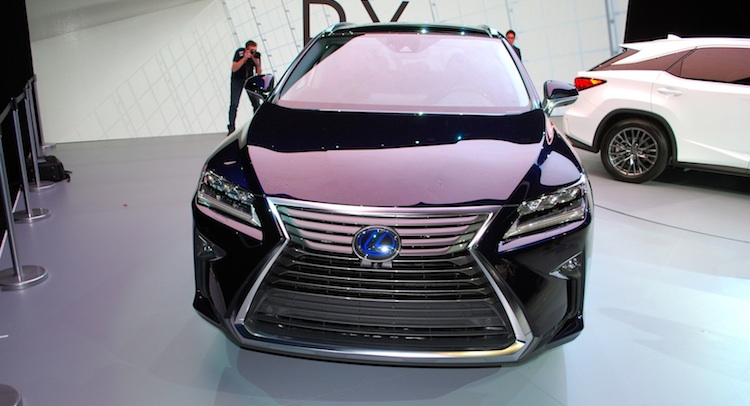What’s more important to Lexus, the aggressive and controversial RC Coupe or a big three-row crossover?
If you ask Toyota’s North American CEO Jim Lentz, a seven-seat brother to the RX would’ve been nice right about now.
In an interview with Automotive News about the current state of the Lexus brand as it faces the ever-surging German luxury brands in the U.S., Lentz admitted few mistakes in the brand’s current strategy. While it still ranks behind BMW and Mercedes-Benz in U.S. sales after a decade-long perch at the top, the gap has been narrowed significantly. And the Lexus RX continues to be the definitive luxury crossover in the sales rankings.
There’s one product planning decision, however, that might’ve turned the tide a bit, according to Lentz:
“In hindsight, if I was making this decision 10 years ago, seeing what I see today, the three-row [crossover] probably would have been the better play to come out first.”
Instead of a three-row crossover to complement the lineup of RX, GX and LX, Lexus pushed ahead with the sporty RC line that boosted the brand’s youthful image. Lentz says he’s happy with that car’s performance so far, but it’s not a volume product. Up against Acura’s increasingly popular MDX, as well as the 2016 Audi Q7 and Volvo XC90. Lexus only has the truck-based three-row GX and LX.
It’s a decision that could be looked at more closely depending how the 2016 RX is received, with its design that’s a clear departure from previous iterations. Only if it’s unpopular with typically loyal RX buyers should Lexus worry.
Lentz says the CT and IS are bringing in new, young buyers and is more concerned about keeping core models up to date rather than exploring new niches as the Germans do.
And if you, like me, are constantly confused by the existence of four-door crossover coupes, you’ll be nodding your head in agreement right now.


















